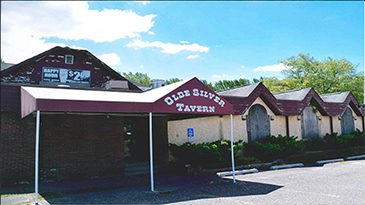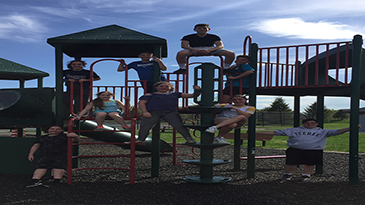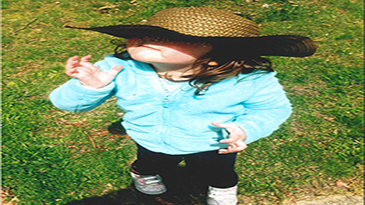Psychology of Addiction
ADDICTION THEORY
Ariel Barter
SUNY New Paltz (Class of 2017)
Manalapan Township Summer Intern
Addiction is the inability to abstain from using a certain substance. It is categorized by cravings, chronic dependency, an inability to recognize its creation of significant problems in one’s behavior and relationships, and a loss of control. There are many different ways to understand addiction and many different theories as to how addiction works. The following are a few theories on how addiction occurs:
First is through the understanding of tolerance. When someone repeatedly abuses a drug or alcohol he or she develops a tolerance to it. This means that the effect of the drug begins to dwindle as it is used more often so that the person must continuously use larger doses in order to feel the same effect felt during the first use. Although the effects of alcohol and drug use on the brain are not yet completely understood, a good deal of research has been on the neurotransmitter dopamine, which appears to be involved in pleasurable activities.
A utilitarian perspective is shown through the Hernnstein—Prelec theory or the primrose theory. For example, when considering an addiction to alcohol, someone would be able to make two choices: to have a drink or not to have a drink. Whether drunk or sober, it is always immediately better to have a drink. However, the more someone makes the choice to drink, the more his or her social relationships and economic well-being deteriorates. Also, the more someone chooses choice A, to have a drink, the slower the effect and needs caused by choice A take to decline when he or she chooses choice B, not to have a drink. For example, if someone chooses a drink for one year, it may take that long for the alcohol to completely leave the person’s system.
It has also been shown that addiction may be related to genetics. It has been shown through numerous family studies, twin studies, and studies of animals that addiction may stem from a genetic basis. Genetics seem to relate to how people respond to and how their bodies ingest alcohol, and may reflect a vulnerability to alcohol in people based on genetics. Common beliefs about genetics’ influence on addiction have been disputed by evidence that many people labeled as alcoholics have periods of moderate drinking, or periods of time when over-drinking was not an issue and that alcoholics have been able to reduce their use in laboratory settings when the benefits seemed worth while. Also, the effects of consumption seem to vary across societies and time periods in ways that contradict the understanding of genetics’ influence on alcoholism.
Another way of viewing the need to use drugs and alcohol that lead to addiction is through operant conditioning. Operant conditioning is an award based learning that reinforces certain behaviors based on its consequences. Because drinking and using drugs has an immediate positive effect, it becomes positively reinforced or supported. Even though it also has negative consequences, such as hangovers, damaged relationships, and difficulty at work, those effects come well after the initial effect so they do not create the same level of reinforcement. Because of this, the person repeatedly uses the drug or drinks alcohol to obtain the positive effect that has been felt immediately in the past.
The understanding of addiction and substance abuse is an ever-growing field in psychology. Further understanding is continuously made for current theories, and new theories are still being born. Some other theories that were not mentioned include: psychological traits’ effect on addiction, psychodynamic processes (theories can be traced back to that of Sigmund Freud), learned cognitions and behaviors, social environmental factors, and more.
SIGNS AND SYMPTOMS
It is important to understand the many signs and symptoms of drug abuse to look out for. This includes, but is not limited to, insomnia or a habitual issue with falling or staying asleep, sudden change in appetite, and increased engagement in risky activities. An addict may give up recreational or social activities in order to entertain his or her addiction, may have issues in relationships or with the law, or may be escaping for solitude in order to adhere to their addiction in private or secret. Common withdrawal symptoms may include cravings, bouts of moodiness, bad temper, poor focus, a feeling of being depressed and empty, frustration, anger, bitterness, and resentment. If you believe someone you know may be addicted to drugs or addiction it is important to work on getting that person help.
TREATMENT OPTIONS
There are numerous ways of treatment and the decision made on how to go about this process would depend on who the person who addicted is, what he or she is specifically addicted to, and many other factors. It is important to understand that treatment may take time to become successful and that not all methods are a good fit for everyone, so someone may have try out different types of treatment.
One type of treatment is long-term residential treatment. This would provide care twenty-four hours a day. The best known treatment model is that of the therapeutic community, which typically schedules lengths of stay to be six to twelve months. This method tries to “resocialize” the patients and help them attain personal accountability and responsibility as well as productive social lives. Programs for treatment include helping residents examine damaging beliefs, self-concepts, and destructive patterns of behavior. It is meant to help residents develop more harmonious and constructive ways of interacting with others.
Another type of treatment is short-term residential treatment. This treatment uses the 12-step approached, which was originally only used for alcohol addiction, but has since been used for other types of addiction. Typically, it consists of three to six week hospital-based inpatient treatment followed by out-going therapy and involvement in a self-help group, like Alcoholics Anonymous. After treatment it is important that patients attend outpatient treatment programs or aftercare programs.
Outpatient treatment programs vary in types and intensity of its programs. They may cost less than inpatient treatment programs and may be more suitable for those who have jobs and a good social support network. Low-intensity outpatient programs often do not offer more than drug education, however. More intensive programs, like intensive day treatment, are comparable to residential programs in service and effectiveness. It is common for outpatient programs to have some type of group therapy option.
A fourth treatment option is called individualized drug counseling. This option focuses on stopping or reducing drug or alcohol use and on related areas of impaired functioning. This could include, among others, employment status, illegal activity, or social relations. Individualized treatment helps the patient develop coping mechanisms in order to ward off the temptations of their addiction. It is still encouraged to participate in a twelve-step program. A counselor will also make referrals for supplemental medical, psychiatric, employment, and other services.
Finally, group counseling is also a viable treatment option and is used in many therapeutic settings. This is meant to use peer discussion to obtain social reinforcement and to promote drug-free lifestyles. Positive outcomes are often found when used in conjunction with individualized drug counseling.
There are also many useful alternative treatment techniques. Once such way is what is known as hypnotherapy. This involves guiding a patient into a trance-like state so that he or she can come up with more imaginative and better solutions to their addiction. This is only effective when working with people who want help and to change their behavior; hypnotherapy cannot change the mind or outlook of someone who does not believe he or she has a problem. Further, it is important that the patient completely detoxifies their system first, which usually involves weeks or months cleaning up their addiction beforehand. Hypnotherapy works very well in preventing a relapse.
Another treatment technique is the use of art therapy. This involves using images drawn or painted to express feelings or thoughts in a nonverbal fashion. This opens up a route to further communication and understanding. It is especially helpful for those with underlying psychological reasons for their addiction.
A third technique is treatment through meditation. An important goal in addiction recover is to establish a distance between the desired drink and the recovering addict. Meditation allows the person to gain a third person perspective on the viewing of their own impulsiveness, allowing them to find peace without relapse. One technique of meditation is called urge surfing. This involves seeing the impulse to drink as a wave and watching it arise and fall on a metaphorical surfboard formed by their breathing. This process allows resisting the urge to drink to come more naturally to the patient. It is important to understand that meditation is not a solution to alcoholism, but is helpful in overcoming urges and avoiding relapse.
There are many treatment centers available around Manalapan New Jersey. A list of referrals and suggestions can be found on the addiction services link of the Community Alliance page.
References
DrugFacts: Treatment Approaches for Drug Addiction. (n.d.). Retrieved August 5, 2015, from http://www.drugabuse.gov/publications/drugfacts/treatment-approaches- drug-addiction
How Art Therapy Is Used in Addiction Treatment. (2014, April 2). Retrieved August 5, 2015, from http://www.foundationsrecoverynetwork.com/art-therapy-used- addiction-treatment/
Hypnosis as an Addiction Treatment – Alcohol Rehab. (n.d.). Retrieved August 5, 2015, from http://alcoholrehab.com/drug-addiction-treatment/hypnosis-as-an-addiction- treatment/
Ogborne, Alan. Theories of Addiction and Implications for Counseling. 1-19. Retrieved formghttp://knowledgex.camh.net/amhspecialists/guidelines_materials/adp/Docu ments/ adp_chapter1.pdf
Rachlin, Howard (1997). Four Teleological Theories of Addiction. Psychodynamic Bulletin and Review, 4(4). 462-473. Retrieved from http://link.springer.com/article/10.3758/BF03214335
































